One Lone Shooter. Or Did He Have Help?
As the secret JFK files are being released by the government, an on-the-scene report from the site of the shooting.
Like so many others, I will always remember where I was November 22, 1963 when I learned about the assassination of President John F. Kennedy. I was in the fifth grade. Sweet and pretty Miss Huntsman informed our class. She cried. So did some of my classmates.
Millions upon millions of people across the country and the world reacted the same. Shocked, horrified, heartsick. A handsome and gifted young man, a war hero, the leader of the free world, with a beautiful family and wife, struck down by a bullet while riding in a motorcade in Dallas, Texas.
How could this happen?
Purely by coincidence, on the day last week the U.S. Government released the long-held confidential files about the Kennedy assassination, I happened to be in the spot where it all went down. Dealey Plaza, in downtown Dallas, at the old Book Depository Building.
The sixth floor of that building has been turned into a museum that is called, appropriately, the Sixth Floor Museum. It contains exhibits, photographs, and TV news footage on the president, his legacy, and the actions that ended his life and the events that followed. There is one small room in the museum where the public is not permitted to go, however.
That is the room you see above (my apologies, not the best image). That is where Lee Harvey Oswald stood when he fired off 3 shots in less than six seconds. They have stacked boxes there to simulate what the room looked like on the day that the shooter, an employee of the Book Depository, did his deed.
The 5-second video you are about to see is not precisely where Oswald stood. They don’t let people stand there. But I was right next to that room, as close as I could get to it. Watch the red car. When it clears the trees, that is the place on Elm Street where the fatal bullet hit the president in the back seat of his open limousine.
Pretty good shot, eh? As a history buff, I have read books and articles about the assassination and this past week I have been following the long overdue release of information that has occurred with the opening of the files. It is exciting to be in a place where history was made, albeit sad and painful history.
After touring the museum I continued my personal search outside in Dealey Plaza. Dealey is an historical site in Dallas, where the city was originally founded. Virtually everyone who goes to the museum comes down to the plaza to see the grassy knoll and observe the murder scene at ground level. There are monuments and tributes to Kennedy here as well.
Most fascinating of all are the faded three X marks that the city has marked on Elm Street. Each X indicates where Oswald’s bullets landed. The first two bullets were far off the mark. The third and final X, further down the street than the other two, was the kill shot.
Elm Street is a busy downtown corridor and traffic comes roaring down it. During a lull I ran into the center of the street and—here I’ll give myself credit, after my less than sterling cardboard box shot—nabbed the exact image I wanted on one take. Then it was a quick hustle back to the safety of the sidewalk before the cars came back.
The X is the kill shot. The old Book Depository is the orange-ish building on the corner guarded by trees. It is seven stories tall. Oswald shot from the sixth floor window, one down from the top. Obviously this photograph and my video were taken 75 years after the fact, not exactly hot evidence in an active murder case.
Nevertheless, it has been established for a long time that Oswald was not a good shot—and items in the current release of the files also bears this out. Nor was his rifle some sort of deluxe sniper’s weapon; it was old and below standard.
The famous (or infamous) grassy knoll is actually a misnomer; it is more of an embankment. It borders Elm Street, steps away from kill shot X, and leads to a freeway underpass. This is the way it looks today. Interestingly, it doesn’t look all that much different than it did in 1963, as shown in a sign at the site:
The grassy knoll looms large in the assassination drama because, as the sign copy reads: “Some witnesses believed shots came from the knoll area, but police found no evidence of a gunman.” Language is a powerful tool. Even seemingly objective statements can carry an implicit message designed to make the reader think a certain way.
The grassy knoll is higher than the roadway. It looks down on it. It is within easy range of the cars speeding down Elm. Standing there, I took another photograph, this time targeting a car an instant before it reached kill shot X. That’s the faded X right in front of the sedan.
The pop-pop sound of gunfire was heard coming from this site. Its perch provides a shooter with evil intent a dead-aim view of the passing target. But the police found no evidence of suspicious activity, so move along, folks. Nothing to see here.
One man, acting alone. End of story.
I am a writer who typically does not like to take sides. Tell the story, and let readers make up their own mind. On this one, however, I confess that like the lady’s slip, my bias is showing. You be the judge.




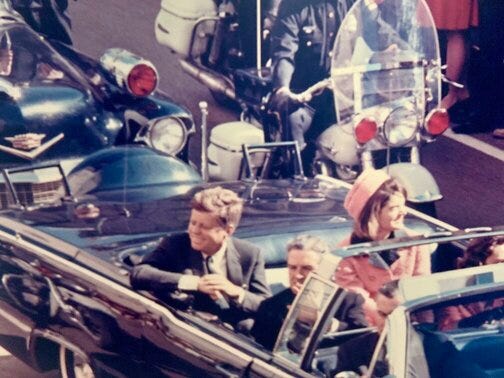
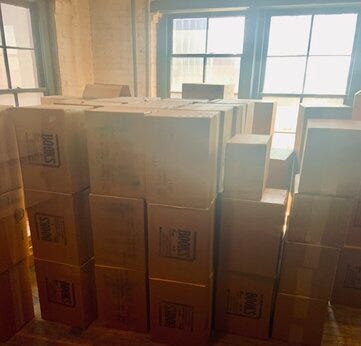
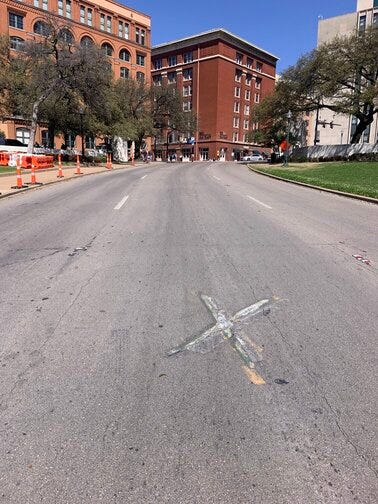
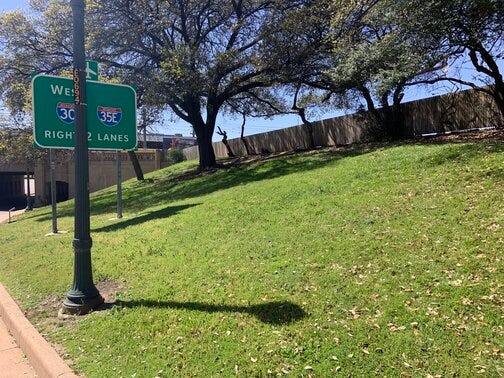
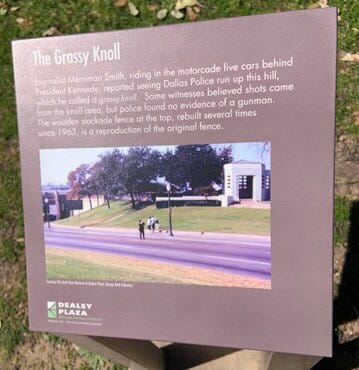
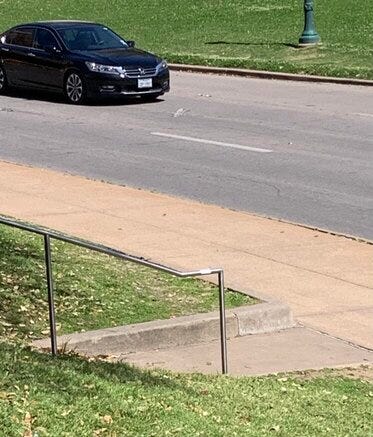
I remember that day well. Good job Kevin.Enjoyed it very much. Coach
Great article Kevin. The still unanswered question is how did President Kennedy suffer a significant blowout to the back of his skull, if all the shots came from the Depository? There had to be a shot that came from the opposite direction. Right? No coverup?